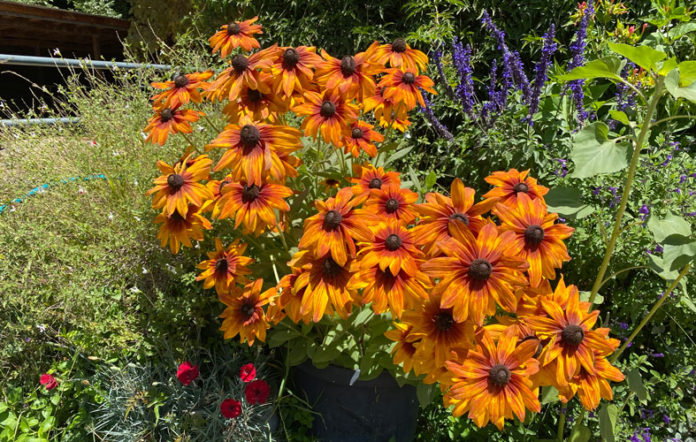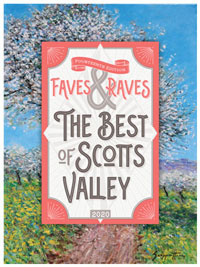With those big brown doe eyes and the cute fawns, who doesn’t enjoy seeing deer, as long as they’re not in your yard. Around my place they only visit very occasionally, which is the worst as I forget they might come at any time and don’t spray on a regular basis. My ornamental sunflower buds were munched and that reminds me, it’s time to spray.
I spray with Squirrel Stopper (I have a squirrel problem, too) as it’s similar to some of the deer repellents with rosemary oil, corn mint oil, putrescent eggs solids and cinnamon oil but doesn’t smell as bad as some of the deer repellents. I don’t need to spray the zinnias, cosmos or Black-eyed Susan’s but they really loved the agapanthus flowers.The hummingbirds were devastated. Picky deer, I guess. But are there any other safe plants that deer seem to avoid?
If you have a resident deer population, you can still have a beautiful garden. Recently I dropped by a garden that I designed to see how it was doing. When I arrived, one big buck bounded out of the main garden and another leaped out of a side section when it saw me. I was pleasantly surprised that the plant palette that I chose wasn’t even nibbled a tiny bit. I don’t know what they were doing in the garden, but it wasn’t eating any flowers or foliage. Deer don’t read those lists and their taste varies with the season, but I can personally vouch for Achillea “Coronation Gold,” Russian sage, leucospermum, asparagus “Myer,” Kangaroo Paw, Fortnight Lily, Radiant manzanita, Mt Tamboritha grevillea and lantana.
There are native plants that are poisonous for us, but only some of them are avoided by deer. It got me thinking. How do deer eat poisonous plants without apparent ill effect?
Deer are browsers. They thrive on a mixed diet. You’ve seen them eat a few roses then saunter over to the abutilon and then on to the daylily flowers. Deer will eat almost anything, even plants with a strong scent like catmint, lavender or thyme when they are hungry or need water. They can even eat a few bites of various toxic plants.
According to Tom Hanley, a wildlife biologist with the Forest Service Pacific Northwest Research Station, “There seems to be threshold levels for the toxicity of different plants, and as long as deer eat below that threshold, they’re okay.” Plant toxicity varies with the time of year also and flowers may be less toxic than leaves or roots. They just mix it up.
That explains the eating habits of deer, but what about us?
Many of us are including native plants in our landscapes to attract wildlife and save water and resources. Here are some common native plants that you should be aware of if you have small children. (This list comes from “California Native Plants for the Garden,” by Bornstein, Fross and O’Brien.)
- Coffeeberry—leaves, berries and bark
- California buckeye—all parts (poisonous to bees also)
- Western azalea—all parts
- Elderberry—all parts except ripe berries and fruit
- Solanum—all parts
- Snowberry—berries
- California buttercup—juice of the plant
- Berberis—roots and leaves
- Prunus (cherry)—seeds
- California poppy—all parts
- Lupine (annual)—seeds, fresh leaves and stems
Mostly though, native plants make great additions to the garden. They tend to be well behaved and are rarely invasive. Birds and butterflies rely on them for food, shelter and nesting. And best of all they are beautiful.
When I’m designing with native plants, I find the following plants are fairly safe around deer. They are not perfectly safe at all times of the year, but they are usually avoided.
- Artemisia also called Ca. sagebrush
- Asarum – Wild ginger
- Baccharis – Dwf coyote brush
- Ceanothus “Julia Phelps”
- Eriogonum – Ca. buckwheat
- Douglas iris
- Mimulus auritanicus – Sticky monkey flower
- Monardella – Coyote mint
- Ribes speciosum – Fuchsia-flowering gooseberry
- Salvia
Enjoy your garden. Let the deer browse elsewhere and be aware of plants that may be toxic to children.
Next week I’ll give you some good techniques that help deter deer.
Jan Nelson, a landscape designer and California-certified nursery professional, will answer questions about gardening in the Santa Cruz Mountains. Email her at ja******@*ol.com, or visit jannelsonlandscapedesign.com.












